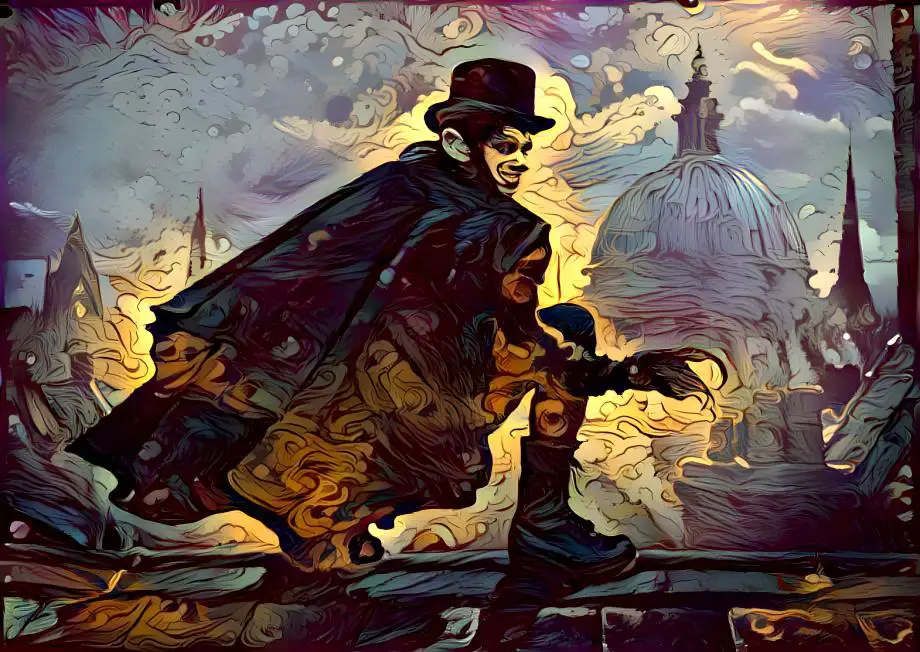Share the Lore!
By: Alex Postrado
What was Spring-heeled Jack?
Ghosts were not a new concept in Victorian England.
As a matter of fact, the early 19th century London was plagued by stories after stories of eerie hauntings, where the alleged tormentors were often described as pale and barely visible, humanlike figures.
One such example was called the Hammersmith Ghost of the early 1800s 一 believed by locals to be the spirit of a man who died by suicide.
Another would be the ghostly tale of a woman, named Ruth Dill, who was said to be a “murderous chambermaid” that worked at a Southampton house around the 1890s.
Needless to say, the ghost mania of the Victorian era was at an all-time high back then. So much so, that even in works of fiction, ghosts made frequent appearances.
Just look at Oscar Wilde’s 1887 book The Canterville Ghost or Sheridan Le Fanu’s 1853 epochal novel An Account of Some Strange Disturbances in Aungier Street!
At the time, ghost stories were, without a doubt, all the rage.
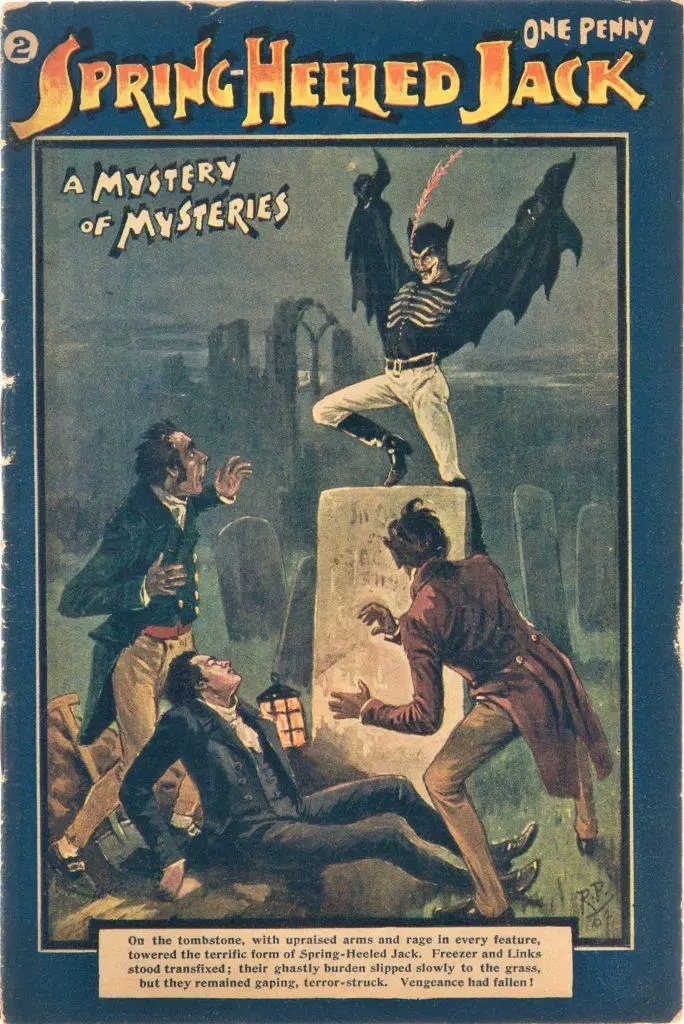
But, things quickly escalated when alleged encounters with a ghostly, leaping devil-man sprung up around the already anxious English region.
People were no longer gathering around at night to tell tales of an unproven and likely made-up entity 一 rather one that supposedly exists.
And soon, the Victorians began realizing that it is only a matter of time before they, too, fall victim to the menacing attacks of a mysterious, fire-breathing entity they liked to call Spring-heeled Jack.
A Ghostly Devil Brought to Life
While ghost stories formed quite a part of 19th century England’s oral tradition, it was only until accounts of an “extraordinarily agile” demon ghost surfaced that the first Victorian urban legend came into view.
In the beginning, they had no singular name for the elusive entity. They did not even immediately agree upon what type of boogeyman it was.
A ghost, a man, or a demonic fiend 一 no one can say for sure.
But people had clues as to what it looked like… and soon, also about what it was capable of doing.
January of 1837 was when reports of the first-ever Spring-heeled Jack encounter came forth. The alleged victim was a barmaid, named Polly Adams.
One night, Adams was walking across Blackheath, south of London, when a strange figure suddenly attacked her.
She had a vague recollection of the actual events 一 as everything happened fast and out of nowhere 一 but she recalled that the figure escaped by leaping from rooftop to rooftop until it completely disappeared.
Unfortunately, the authorities eventually shelved her account for the lack of verifiable leads.
Then came October of 1837.
A servant, by the name of Mary Stevens, was on her way to work at Lavender Hill one particular evening when, in a flash, a mysterious figure “leaped at her from a dark alley.”
It proceeded to pin her down to the ground, kiss her on the face, ripping her clothes, and claw through her flesh with talons, which she described to be as “cold and clammy as those of a corpse.”
During the ordeal, Stevens allegedly screamed for her life 一 a gesture that alarmed the residents nearby and panicked the unknown menace, causing him to flee the scene hastily.
A search was right away launched to track down the attacker 一 who was described to be a “tall and thin” devil-like creature with “clawed hands and eyes that resembled red balls of fire.”
But, in the end, no one was caught.
The very next day, a similar figure was reported to have caused another commotion. Although this time, the victim was mainly a coachman who was severely injured after crashing the carriage he was driving when the purported jumping took place.
It is said that a high-pitched cackling could be heard while the unidentified boogeyman was making a break for it.
Interestingly enough, at one point during the chase, the figure was even noted to have leaped over a 9 feet high wall with no trouble at all 一 cementing people’s already-existing speculation of the culprit, being of supernatural origin.
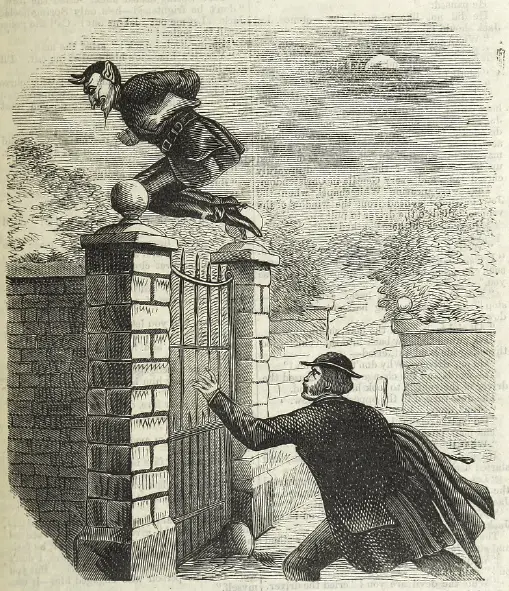
The Cases of Victims Jane Alsop and Lucy Scales
Sadly, while the first three incidents were frightening enough to most Victorians, the police were only truly on the edge of their seats when the case of Miss Jane Alsop was brought to their attention.
Unlike the previous victims, who all belonged to the working class, Miss Alsop was the daughter of a known gentleman. And so, it was not just the force that was involved in the action. The press 一 including The Times 一 also widely covered the incident.
On the night of February 19, 1838, a man came to the door of the Alsop residence, asking for a candle while claiming to have captured the mysterious devil-man of London, finally given the name of Spring-heeled Jack.
It was the then-18-year-old Miss Alsop who answered the door 一 holding out a candle, only to be greeted by a cloaked figure that reportedly breathed white and blue flames out of his mouth.
Without a word, this figure pounced at Miss Alsop, tearing her gown with his claws, and slashing the side of her neck and arm.
Had she not screamed loud enough, chances are, she would have not survived the encounter.
But, as it turns out, one of her sisters heard her shrieks and ran immediately to her rescue. The two managed to escape and alert the police, right as the assailant beat a hasty retreat.
This incident propelled the name Spring-heeled Jack further into the public eye.
And it got even more notoriety when another teenager 一 a girl named Lucy Scales 一 became one of his victims as well.
While on their way home from their brother’s place barely two weeks after Spring-heeled Jack ambushed the Alsop residence, Lucy Scales and her sister met an ominous stranger, standing at the end of Green Dragon Alley.
As they drew closer, they realized that it was none other than the feared Spring-heeled Jack!
In the statement, submitted by their brother to the authorities, he claimed that just a few moments after leaving his house, he heard one of his sisters yelling for help somewhere by the Green Dragon Alley. He quickly followed the noise and found Lucy “on the ground in a fit,” while his other sister tried to hold her up.
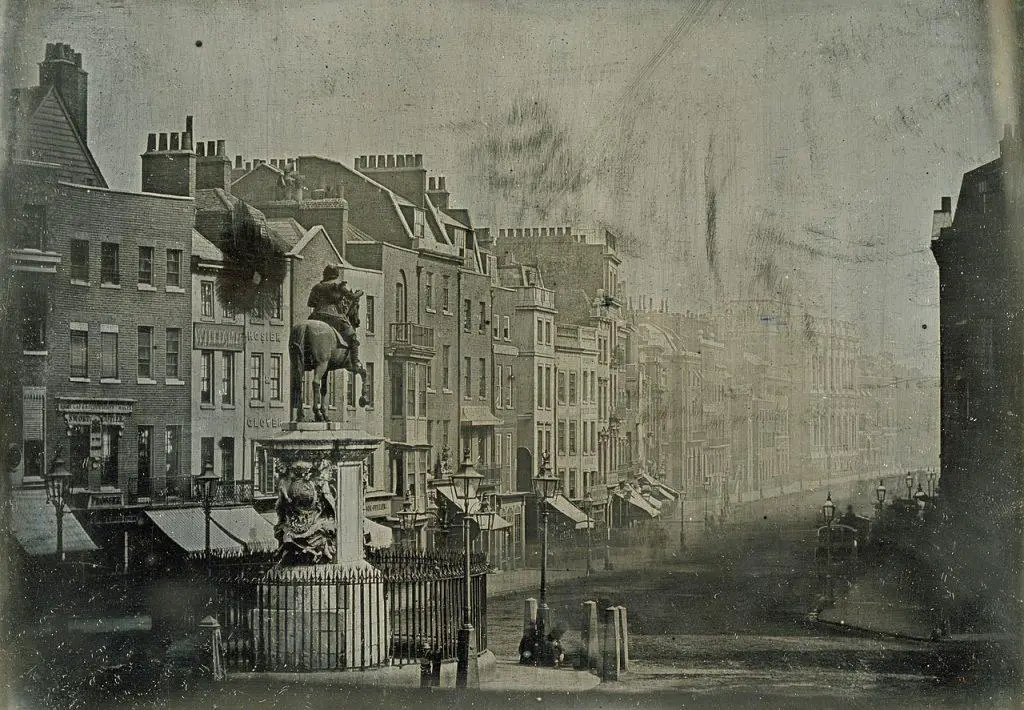
The descriptions given of the attacker eerily matched the records of Spring-heeled Jack 一 although, with a couple of new additions, namely:
- A bull’s-eye lantern that Spring-heeled Jack allegedly carried;
- And a particularly “gentlemanly appearance” that was not mentioned in the previous accounts.
The Marquess of Waterford Theory
Over the course of Spring-heeled Jack’s Victorian-era reign of terror, many have been arrested and questioned after falling under suspicion of being the ‘demon’ under the cloak.
At one time, The Lord Mayor of London himself, John Cowan, even announced that “a gang of wealthy jerks” may have been the cause of the back-to-back disturbances.
Measures like these put aside the suppositions of others about Spring-heeled Jack’s nature being of a supernatural kind, and rather, present the theory that the culprit might, in fact, be one of us 一 a human.
Nevertheless, no one was fully put away for the crimes committed by Spring-heeled Jack.
The accused were all eventually set free for the lack of hard evidence 一 thus, the anxiety of the masses only carried on and translated into them, pinning the blame on people they considered “fit” to bear it.
Perhaps, the best known among the accused was Henry Beresford, a nobleman and the 3rd Marquess of Waterford.
It was mainly due to one reason he was widely thought out to be the man behind Spring-heeled Jack.
The two share “a macabre sense of humor.”
While Spring-heeled Jack was notorious for his menacing attacks on 一 mostly 一 women, as well as the uproarious laughter he lets out as he makes a getaway, the Marquess was infamous for his “contempt for women” and his galling theatrics, which included:
- Initiating and participating in drunken brawls;
- Paying citizens to take him out on a fight;
- Vandalizing properties;
- And humiliating people 一 even those in authority.
These acts earned him the title of “The Mad Marquis.“
It is also said that he was immortalized through the expression “paint the town red,” which was allegedly coined after one of his practical jokes where he, along with a few companions, literally painted over an entire town.
Despite all that, in the end, none of these incidents 一 no matter how troublesome 一 was enough to convict the Mad Marquis of the crimes perpetrated by the elusive Spring-heeled Jack.
And the cases just kept on piling up until Spring-heeled Jack’s last reported sighting in 1904.
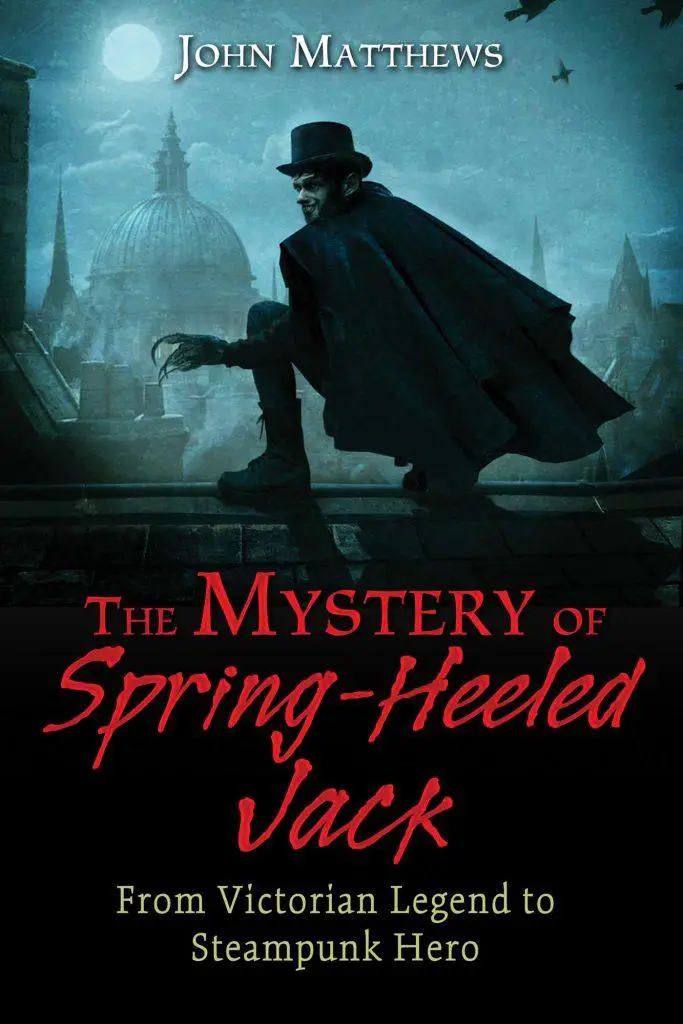
Champion of the Oppressed or Murderous Rogue?
In 1845, rumors had it that Spring-heeled Jack was no longer just a sick prankster of some sort, but a murderer of a woman named Maria Davis.
The story claims that Davis was walking alone in London one day, when the Victorian devil-man suddenly jumped at her, “spit blue and white flame in her face,” and then “threw her over a bridge into an open sewer” 一 all in broad daylight.
This immediately caused mass hysteria all over the region, in spite of the lack of virtually any record that would confirm the death 一 nor existence 一 of a certain Maria Davis.
But, still, this story was enough to add fuel to the flames that kept the name Spring-heeled Jack on the radar.
Over the next years, the moniker even became somewhat ‘officially’ synonymous with the words “demon” and “devil.”
In traditional Punch and Judy puppet shows, for example, the character of the Devil was once renamed, Spring-heeled Jack.
On the contrary, around the later part of the 19th century, popular serial literature penny dreadfuls began painting Jack in a more heroic light 一 as an “altruistic avenger of wrongs and protector of the innocent.”
These varying opinions about Victorian England’s first boogeyman saturated tales and other works of fiction in the centuries that followed.
So much so, that many who are familiar with Spring-heeled Jack, nowadays, are confused about whether he was actually a villain or a misunderstood case of a hero, dressed in a pitch-black cloak.
Either way, the legend of the leaping devil-man proved to be one that is worth telling for years on end 一 as a bedtime tale, as a campfire story, and as the plot of countless pop culture pieces from recent memory.
References:
Meet Spring-Heeled Jack, The Leaping Devil That Terrorized Victorian England The Legend Of Spring-Heeled Jack, The Victorian Demon Who Terrorized London Spring-Heeled Jack: Notorious Urban Legend Or The Work Of The ‘mad Marquess’ Of Waterford? Spring-Heeled Jack Spring-Heeled Jack - Monster
